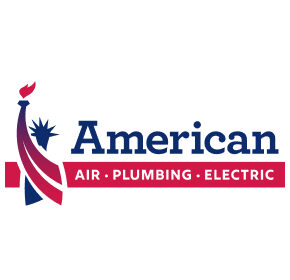Winters in Florida may be mild compared to the rest of the country, but most homeowners still rely on their heat pumps on chilly mornings or during occasional cold fronts. Taking a little time to adjust and prepare the system before temperatures drop can make a big difference in comfort and efficiency. With the right preparation now, you can reduce wear, avoid energy waste, and keep your heat pump running at its best, so let’s dive into how to get your heat pump ready for the cooler season ahead.
How to Prepare Your Heat Pump for Cooler Weather
Getting your heat pump ready for winter doesn’t take long. These steps will help your system respond more effectively when temperatures dip and prevent small issues from becoming bigger problems later:
Switch the Thermostat from Cooling Mode to Heating Mode
Switching the system to heating mode ensures the heat pump produces warm air rather than cool air as temperatures fall. Homeowners should use the standard heating mode for day‑to‑day comfort because it allows the heat pump to operate efficiently. The emergency heat setting switches your system to a backup heating method, and it should only be turned on if your heat pump is struggling to operate normally.
Clean or Replace Air Filters
Dirty filters limit airflow, making it harder for the heat pump to deliver steady, comfortable heat. Changing filters every 30–90 days, depending on how often your system runs and your indoor air quality, keeps everything flowing smoothly. Clean filters also help reduce energy use and minimize strain on the system.
Clear Debris from the Outdoor Unit
Leaves, branches, pine needles, and other debris can accumulate around the outdoor unit, reducing airflow. Keeping at least 2–3 feet of open space around the system helps it operate efficiently. Because hurricane season often leaves behind a mess, the transition into winter is a perfect time to remove anything that may have collected around the unit.
Inspect Airflow Around Vents and Indoor Registers
Blocked or clogged vents prevent warm air from moving through the home as it should. Furniture, curtains, rugs, and even storage bins can interfere with airflow and create uneven temperatures. Clearing these spaces helps the heat pump maintain a consistent environment throughout the home.
Check the Thermostat for Proper Calibration
A thermostat that reads temperatures inaccurately can lead to discomfort and higher energy bills. Verifying that your thermostat is properly calibrated keeps your heat settings reliable. Some homeowners choose to upgrade to a smart thermostat for better precision and automatic temperature adjustments.
How to Use Your Heat Pump Efficiently During Winter
These tips can help your heat pump work more efficiently throughout the cooler months:
- Set moderate indoor temperatures: Keeping the thermostat in the low-to-mid 70s usually offers the best balance of comfort and efficiency.
- Use “auto” mode for best performance: This mode allows the heat pump to adjust cycles as needed, helping it maintain steady temperatures without overworking.
- Avoid constant thermostat adjustments: Frequent changes make the system cycle on and off more often, which increases energy use. use
- Do not use emergency heat unless necessary: Backup electric coils consume much more power, so emergency heat should be saved for system malfunctions or unusually cold weather.
- Use ceiling fans on low in reverse mode: running them clockwise helps push warm air downward, improving comfort without increasing energy use.
Florida-Specific Factors That Affect Heat Pump Performance
Heat pumps in Florida face a few unique conditions that influence how well they operate during winter:
- Managing humidity during cooler weather: Heat pumps remove less moisture while heating, so indoor humidity may rise. If your home feels stuffy, you may benefit from a whole-home dehumidifier.
- Salt air exposure near coastal areas: Homes closer to the ocean may see corrosion on outdoor components, making heat pump maintenance especially important.
- Post-storm season wear: Heavy rain, salt spray, and storm debris can impact performance, so a post‑storm system check is a good idea to ensure reliable heating.
- Long cooling seasons, short heating seasons: Because heat pumps spend most of the year cooling, parts can stiffen or wear slightly before switching to heating mode; a seasonal tune‑up helps prevent issues.
Other Ways to Support Winter Comfort and Efficiency
Small improvements and early awareness can help your heat pump operate more smoothly, so try these tips:
- Keep doors and windows sealed: Fresh weatherstripping prevents heat loss and helps the system maintain stable temperatures.
- Monitor for unusual noises or odors: Any new or unexpected sounds or smells should be addressed quickly to avoid larger problems.
- Consider a smart thermostat installation: Smart thermostats automatically respond to temperature swings and seasonal changes, helping maintain efficient operation.
Request Heat Pump Maintenance From American Air, Plumbing, and Electrical
Seasonal heat pump maintenance is one of the best ways to prepare for winter and protect your system in the long run. A professional tune‑up helps eliminate hidden issues, improve energy efficiency, and reduce the risk of a mid‑season breakdown. The team at American Air, Plumbing, and Electrical offers expert heat pump services. It can inspect your heat pump, clean key components, and verify that it’s ready for both heating and cooling transitions. With licensed technicians, emergency heat pump repair, and upfront pricing, we’ll be there when you need us to help keep you comfortable through the winter and all year long.
Schedule heat pump maintenance with American Air, Plumbing, and Electrical today to stay comfortable this winter!


